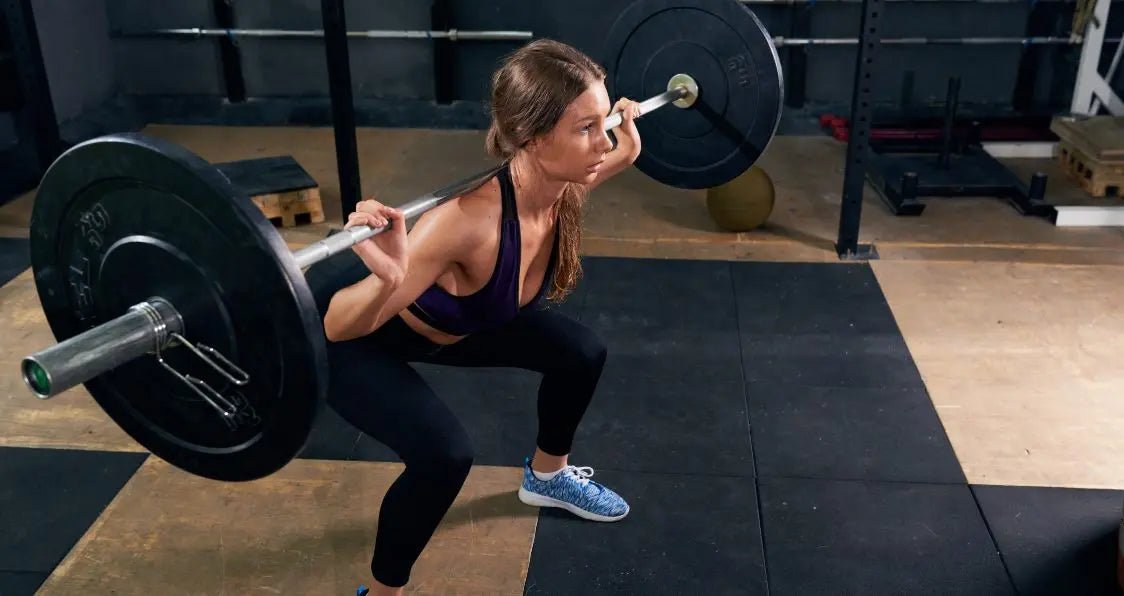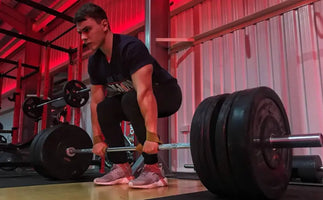
Back Squat High Bar vs Low Bar
The back squat is a staple exercise in the world of fitness, known for its ability to build strength and muscle mass in the lower body. However, there are two main variations of this exercise that are often debated among fitness enthusiasts: the high bar squat and the low bar squat. Both have their unique benefits and drawbacks, and the choice between the two often depends on an individual's fitness goals, body mechanics, and personal preference.
The High Bar Squat
What is a High Bar Squat?
The high bar squat, also known as the Olympic squat, is a variation of the back squat where the barbell is placed on the upper traps, just below the neck. This position allows for a more upright torso during the squat, which puts more emphasis on the quadriceps and less stress on the lower back.
Due to its upright position, the high bar squat requires a good amount of ankle mobility and flexibility in the hips and knees. This makes it a great choice for athletes or individuals who are looking to improve their mobility and flexibility while also building strength and muscle mass.
Benefits of the High Bar Squat
The high bar squat is known for its ability to target the quadriceps more directly than the low bar squat. This can lead to greater quadriceps development and strength, which can be beneficial for athletes who rely on these muscles for their sport.
Additionally, the upright position of the high bar squat can help improve posture and mobility, making it a great choice for individuals who spend a lot of time sitting or who have postural issues. The high bar squat can also be easier on the lower back than the low bar squat, making it a better choice for individuals with lower back issues.
The Low Bar Squat
What is a Low Bar Squat?
The low bar squat is a variation of the back squat where the barbell is placed lower on the back, on the posterior deltoids. This position allows for a more forward-leaning torso during the squat, which puts more emphasis on the posterior chain, including the glutes and hamstrings, and less stress on the knees.
Due to its forward-leaning position, the low bar squat requires a good amount of hip mobility and stability in the lower back. This makes it a great choice for powerlifters or individuals who are looking to improve their posterior chain strength and muscle mass.
Benefits of the Low Bar Squat
The low bar squat is known for its ability to target the posterior chain more directly than the high bar squat. This can lead to greater glute and hamstring development and strength, which can be beneficial for athletes who rely on these muscles for their sport.
Additionally, the forward-leaning position of the low bar squat can help improve hip mobility and stability, making it a great choice for individuals who have hip or knee issues. The low bar squat can also allow for heavier weights to be lifted than the high bar squat, making it a popular choice among powerlifters and strength athletes.
High Bar vs Low Bar: Which One is Right for You?
Consider Your Fitness Goals
If your goal is to build quadriceps strength and size, or to improve your mobility and posture, the high bar squat may be the better choice for you. On the other hand, if your goal is to build posterior chain strength and size, or to lift heavier weights, the low bar squat may be the better choice.
However, it's important to note that both variations of the squat can be beneficial for overall strength and muscle development. Therefore, incorporating both into your training program can provide a well-rounded approach to lower body training.
Consider Your Body Mechanics
Your individual body mechanics can also play a role in which squat variation is best for you. For example, individuals with longer femurs may find the low bar squat more comfortable, while those with shorter femurs may prefer the high bar squat.
Additionally, your mobility and flexibility can also influence which squat variation is best for you. If you have limited ankle mobility, you may find the high bar squat more challenging, while if you have limited hip mobility, the low bar squat may be more difficult.
Consider Your Personal Preference
Finally, personal preference can also play a role in which squat variation you choose. Some people simply find one variation more comfortable or enjoyable than the other. Therefore, it's important to try out both variations and see which one you prefer.
In conclusion, both the high bar squat and the low bar squat have their unique benefits and can be effective for building strength and muscle mass. The choice between the two often comes down to individual fitness goals, body mechanics, and personal preference. By understanding the differences between the two, you can make an informed decision about which squat variation is best for you.






